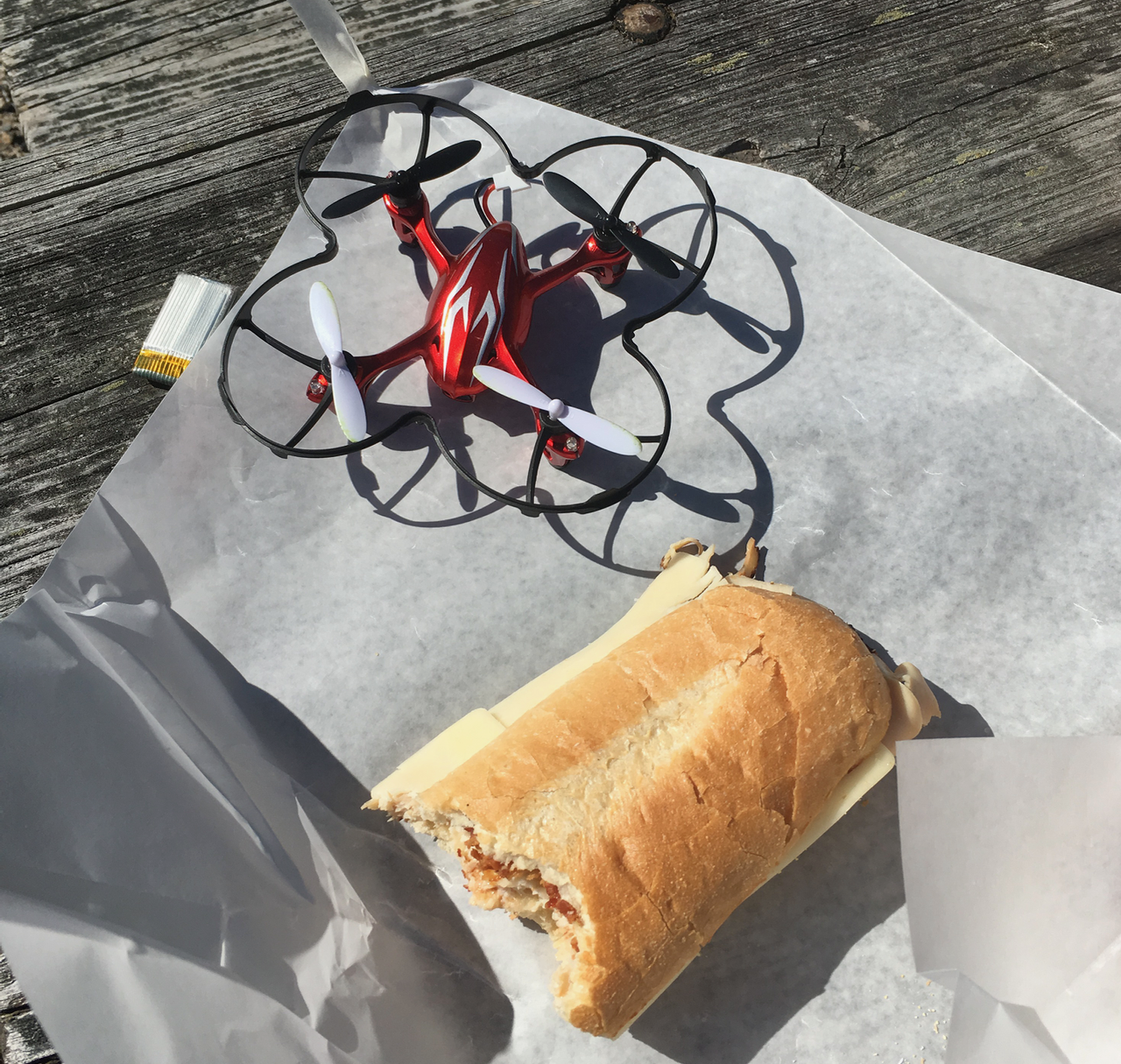
The next time I flew I wanted to test out the camera on it, but unlike the Syma this one only supports video and the switch to start and stop recording is on the quad itself. So you always end up recording your entire flight, it is also important to note that you have to make sure you stop the recording before unplugging the battery, or you will not get any movie files. At first the camera didn’t seem to work so I ordered a second one, but once the second one arrived and I confirmed that I was recording video right, the first one ended up working after all. The video wasn’t great and was very similar to the Syma, but I didn’t care because it was cool to get a bird’s eye view of the backyard.
Here is some video shot while flying
I ordered six more batteries and would fly every evening after work for about 45 minutes. I tend to be very cautious, which probably slowed down my progress, but also meant that I didn’t have any major crashes that required me to go out and by another drone. After a couple weeks I was flying all over the yard using just pitch and roll for movement and then started playing around with yaw. I then started working on banked turns, which took a lot of practice to get right, but once my brain locked in on it things quickly got more exciting. I could now fly in circles and even began the tricky practice of flying at myself.
The H107C is a great quad for learning the basics of flying for a relatively low price. It seemed to have good quality components, it came with a nice prop guard, which I didn’t use at first because it was attached on the underside of the packaging. One cool feature is each of the arms have a break away spot that will help prevent them from breaking in a crash, this happened a few times and I just had to snap it back in place and was ready to fly again (always be sure and check that they are all locked in place before you fly).
The only problem I have had with the Hubsan X4 (H107C & H107D) series is with the wire that connects the battery to the circuit board. After a few weeks of sliding the battery in and out, one of the wires disconnected and I was unable to use it anymore. Luckily for me I had the spare one so I just moved on and kept flying. Eventually I learned how to solder and brought my first one back to life, but for a beginner it probably isn’t an option.
At this point I had learned a little bit about flying and was starting to get comfortable flying in different places. I even took it on vacation with us and flew in a couple spots. It was time to take it to the next level and enter the world of FPV.
Go back and read My Road to FPV (Part Two)